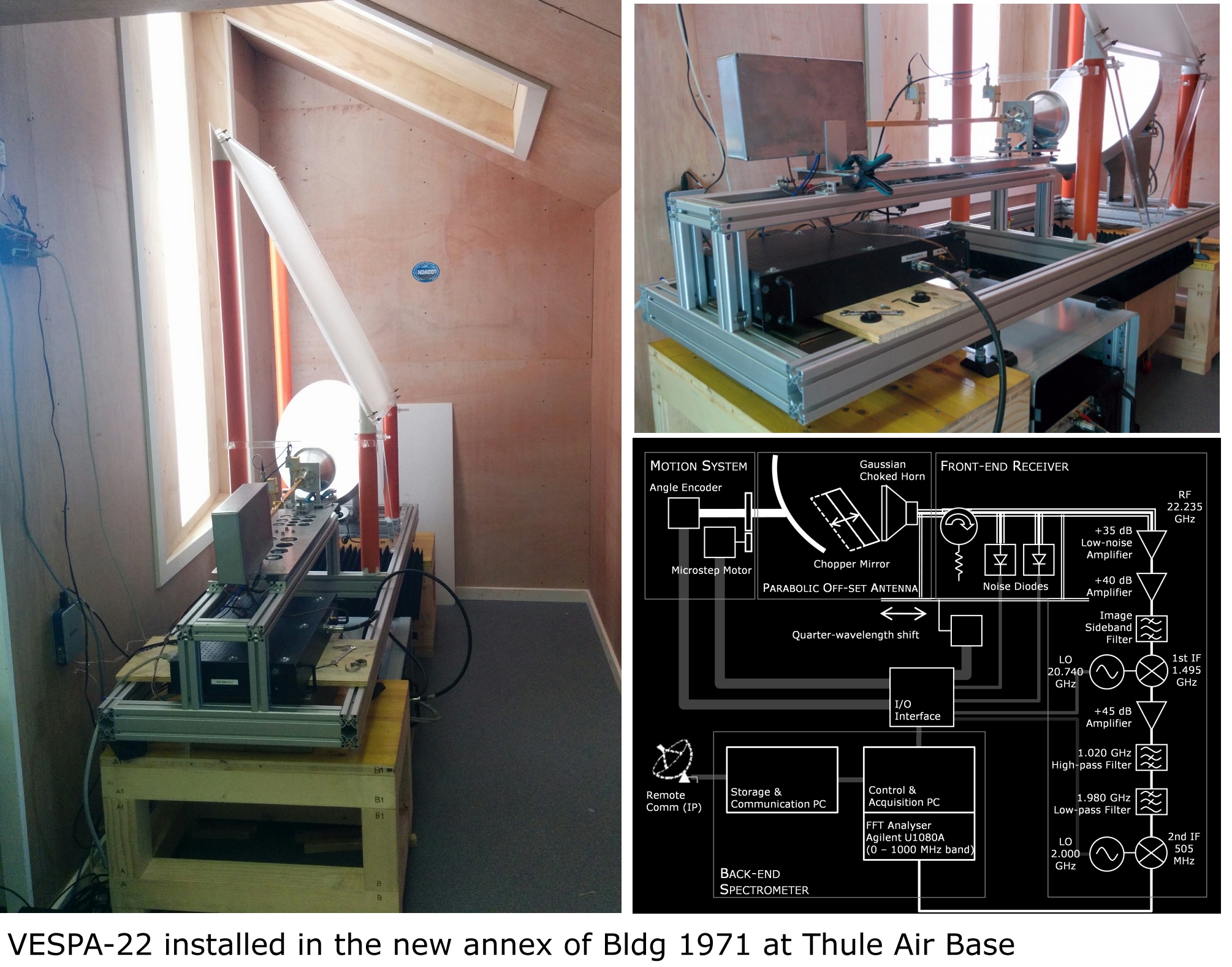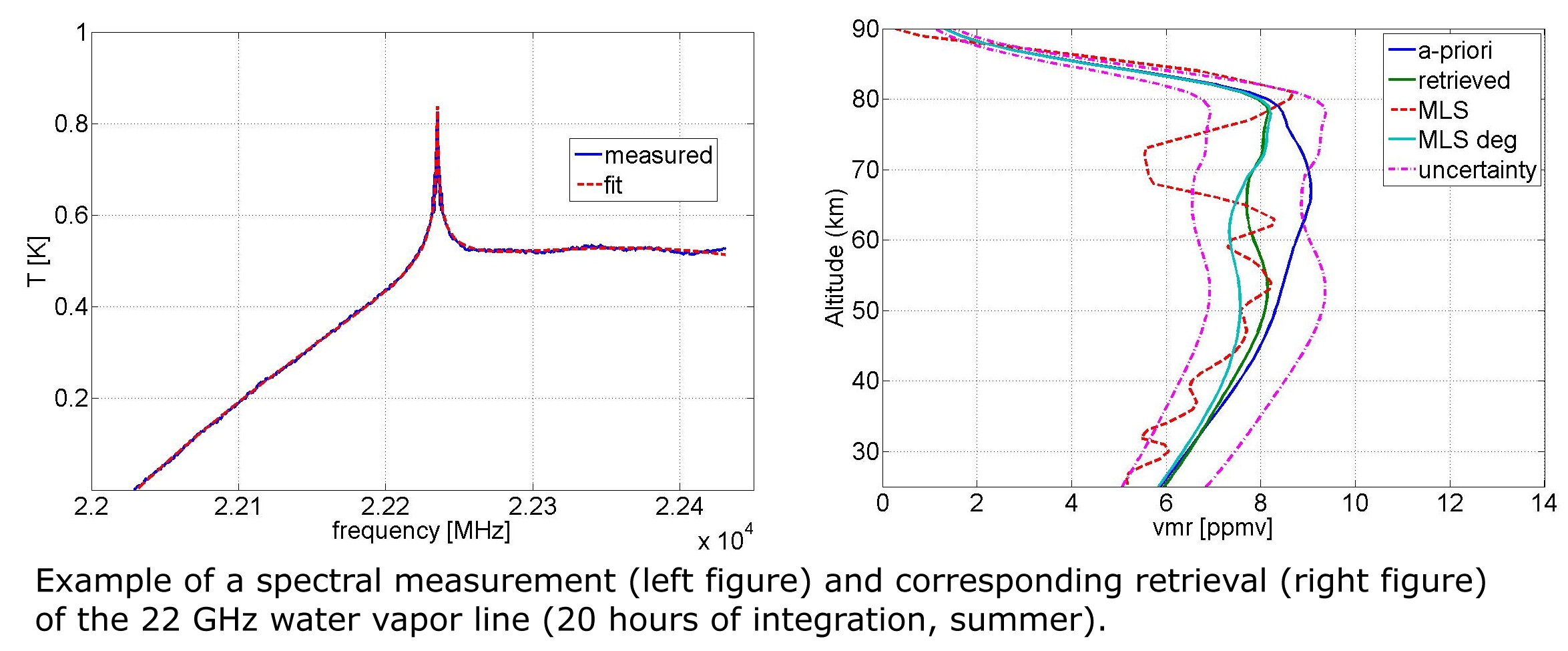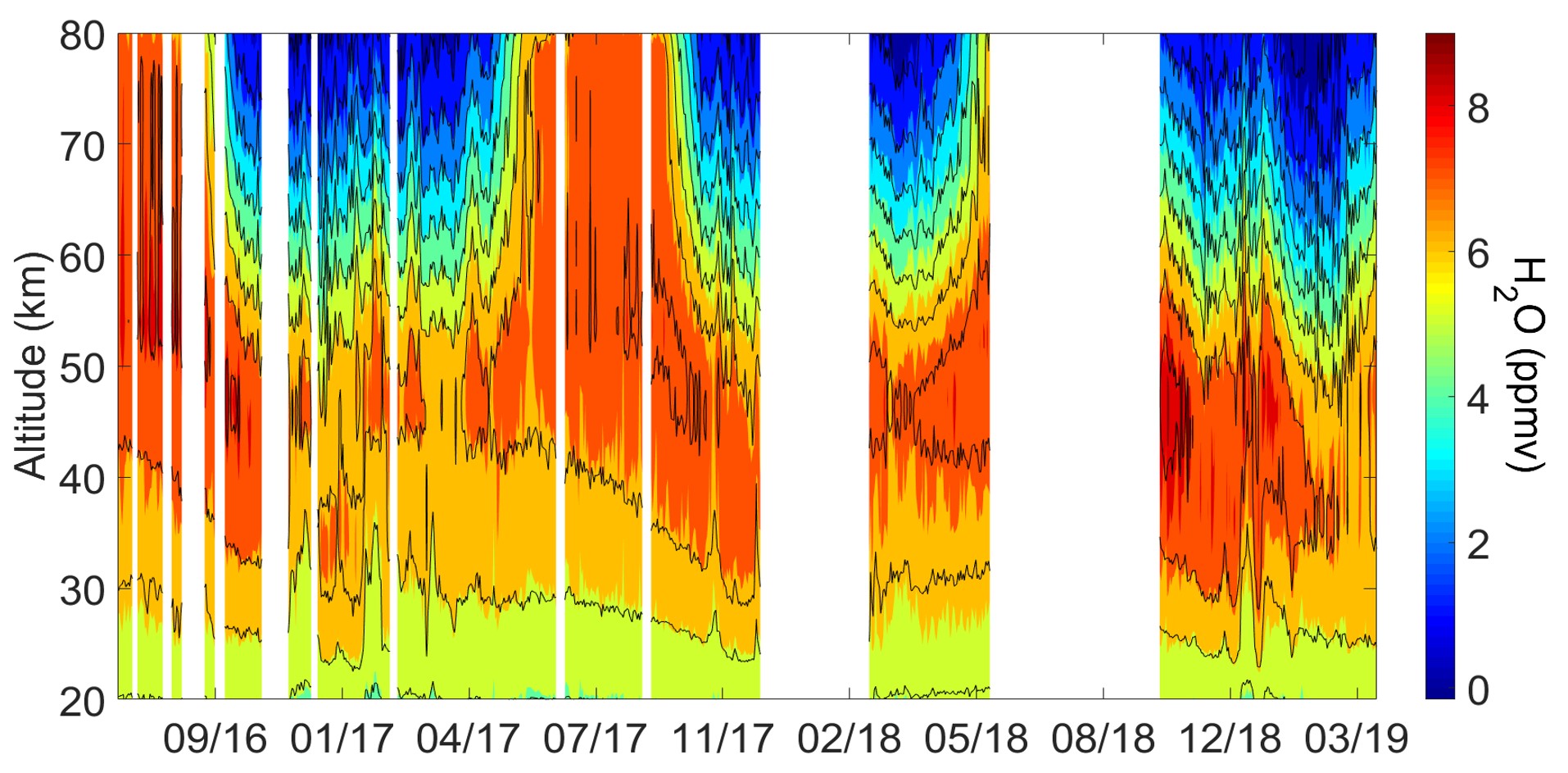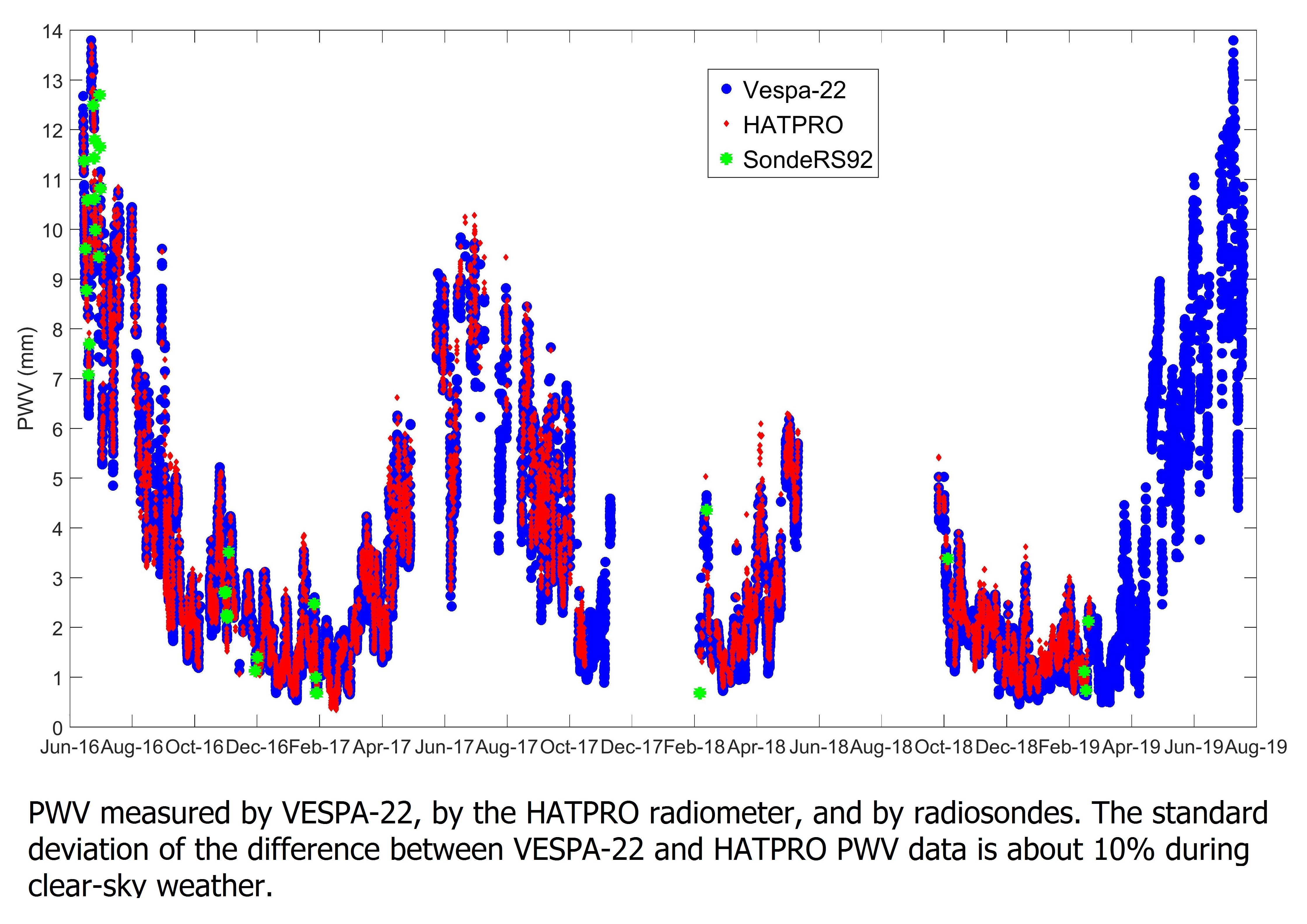Instruments:
The water Vapor Emission Spectrometer for Polar Atmospheres at 22 GHz (VESPA-22)
PI: Giovanni Muscari email:giovanni.muscari@ingv.it
A 22 GHz spectrometer for the measurement of stratospheric and tropospheric water vapor has been designed and built at INGV. VESPA-22 has been installed at Thule
in July 2016 during the measurements campaign for the PNRA project SVAAP. It is operating within the framework of the
Network for the Detection of Atmospheric Composition Change (NDACC).
The spectrometer observes the water vapor emission line at 22.23 GHz with a 500 MHz passband and 30 kHz of spectral resolution, allowing the retrieval of vertical profiles
of water vapor from about 25 to 75 km of altitude using an optimal estimation method. The tropospheric sky opacity is also obtained by means of regular sky dips,
or tipping curves, and column water vapor can therefore be accurately estimated.
Scientific issues of interest
- Variations of water vapor concentration in the lower and middle Arctic atmosphere in relation to the observed increase in tropospheric temperature;
- Long-term trends in column and stratospheric water vapor;
- Impact of tropospheric and stratospheric water vapor concentrations on solar and IR radiation budget at the surface (In collaboration with ENEA);
- Impact of the expected change in stratospheric water vapor on ozone depletion and vortex dynamics in the Arctic;
- Satellite data are expected to become sparse in the near future and networks of ground-based instruments capable of long-term observations are becoming even more desirable for monitoring the middle atmosphere.


New annex built at the Thule observatory for hosting VESPA-22




